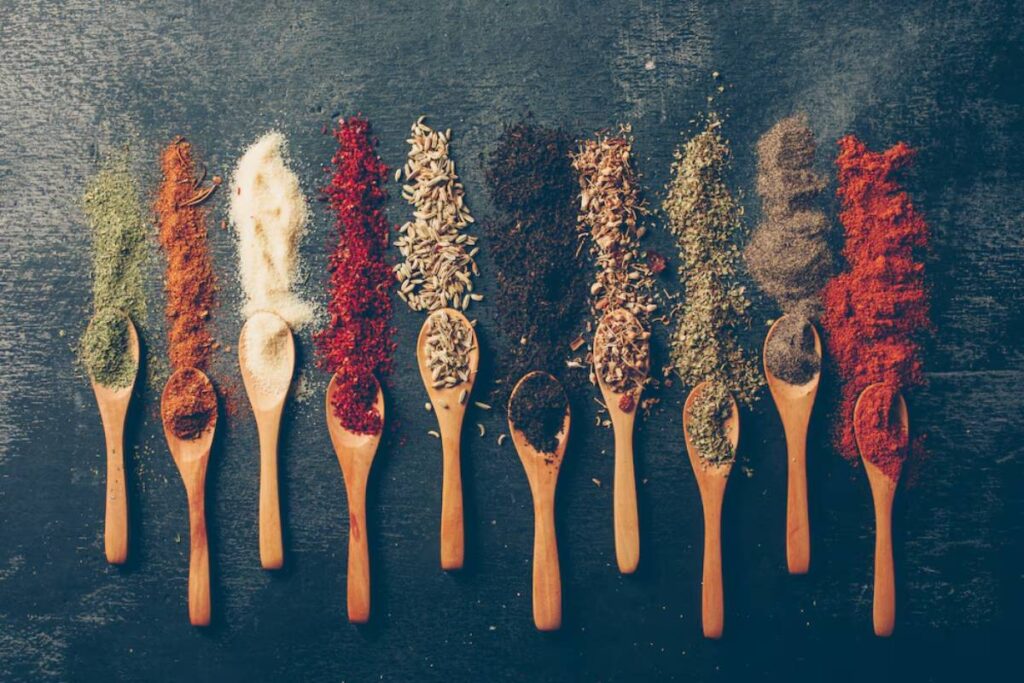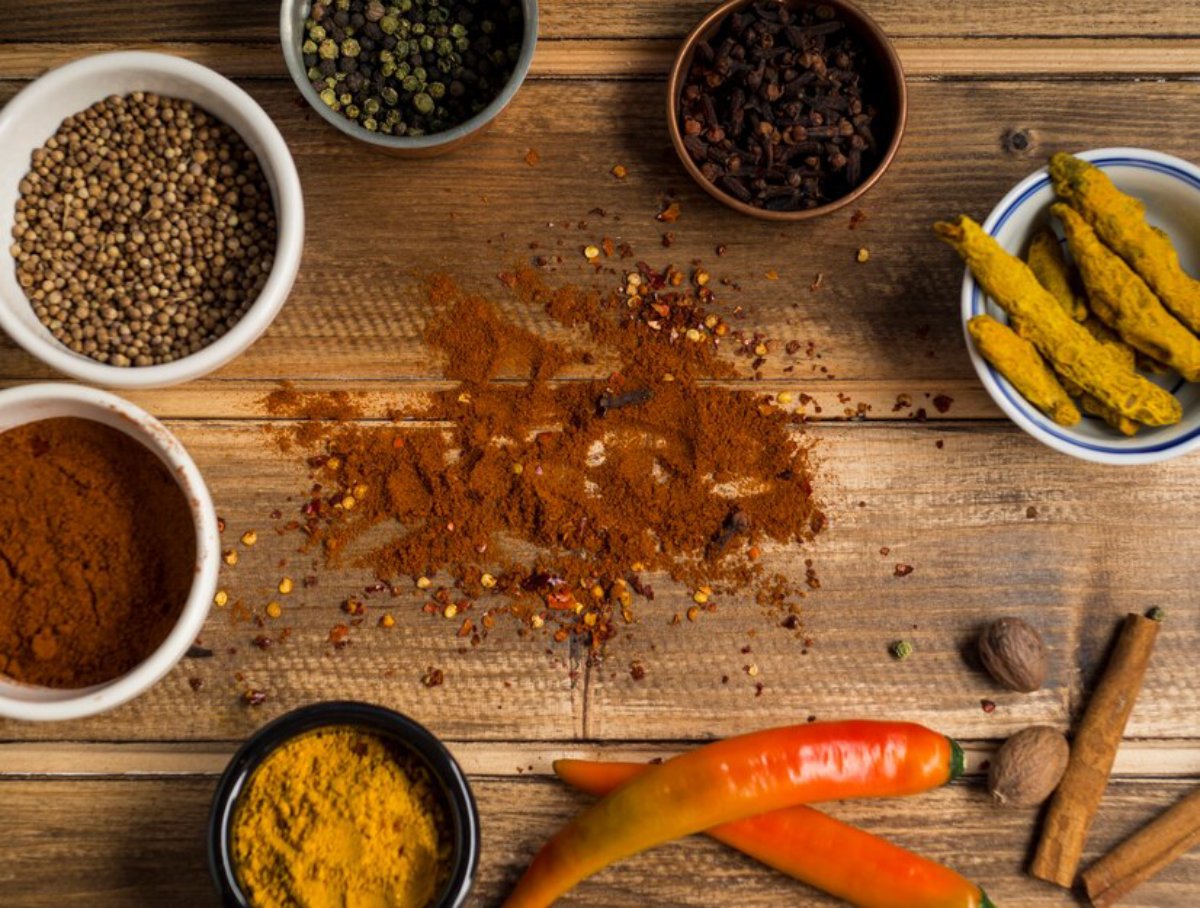The Food Blog

Spice Pairing Secrets: Elevate Everyday Cooking
Ever wonder why some home-cooked meals fall flat while others explode with flavour? The secret ingredient is an often-overlooked culinary art: spice pairing. Mastering this skill can turn everyday cooking into a tasty fiesta, turning simple dishes into unforgettable feasts.
Great chefs don’t merely sprinkle salt and pepper; they embark on a flavour expedition. With carefully chosen seasonings, they delve into depth, contrast, and complexity. No matter your skill level, learning to season and pair spices can elevate your cooking.
Why Spice Pairing Matters
1. It Builds Flavor Layers
Spices bring aroma, taste, and warmth. The right pairings let sweet, bitter, earthy, and pungent notes blend well. They harmonise instead of overpowering one another.
2. It Enhances Ingredient Synergy
Spices boost the natural taste of foods. They work well with vegetables, grains, meats, and legumes, creating a tasty blend that enhances umami.
3. It Adds Global Flair
Spices can bring global flavours to your cooking. You can make a warm Moroccan tagine or a vibrant Thai curry home.
The Foundations of Spice Pairing
Before diving into specific combinations, it’s helpful to understand some basics:
1. Flavor Profiles
Spices can be grouped by their flavour profile. Common categories include:
- Warm & Sweet: cinnamon, nutmeg, allspice, clove
- Earthy & Woody: cumin, turmeric, coriander
- Pungent & Sharp: mustard seeds, chilli flakes, horseradish
- Citrusy & Fresh: cardamom, lemongrass, sumac
- Herbaceous: thyme, oregano, rosemary (technically herbs, but often used in spice blends)
2. Complement vs. Contrast
You can create great spice pairings by matching flavours, like coriander and cumin. Or, you can contrast them for balance, like chilli and lime zest.
3. Heat Level
Balancing spice heat with sweetness or acidity makes food tasty but not too strong. For example, pairing chilli with honey or lime works well.

Popular Spice Pairings to Elevate Everyday Dishes
Here’s a breakdown of tried-and-true combinations to enhance your go-to recipes:
1. Cumin + Coriander
Best For: Roasted vegetables, curries, lentils. This duo supports Indian, North African, and Latin dishes. Earthy cumin meets citrusy coriander for warmth and brightness.
2. Paprika + Garlic Powder
Best For: Potatoes, pasta, grilled tofu, or chicken. Sweet or smoked paprika gives depth, and garlic powder boosts the umami. It’s a must for marinades and dry rubs.
3. Thyme + Lemon Zest
Best For: Seafood, roasted chicken, salad dressings. Thyme adds a woody taste. It pairs well with zesty citrus notes, making a clean, aromatic finish.
4. Cinnamon + Chili Powder
Best For: Mexican dishes, beans, chocolate sauces. This combo works well in mole or chilli. It adds sweet warmth and lingering heat, making savoury-sweet dishes more flavorful.
5. Turmeric + Black Pepper
Best For: Rice dishes, soups, golden milk. Turmeric is earthy and bright. Black pepper helps activate curcumin, the key compound in turmeric. This boosts health benefits and flavour.
6. Ginger + Cardamom
Best For: Baking, curries, tea blends.
Sharp ginger and floral cardamom balance sweet and savoury. They shine in Middle Eastern and South Asian dishes.

Global Spice Combinations Worth Mastering
Want to explore the world through flavour? Try these culturally inspired spice blends:
1. Garam Masala (India)
Contains: cinnamon, cloves, cumin, cardamom, black pepper, nutmeg
Use It With: stews, lentils, roasted vegetables
2. Za’atar (Middle East)
Contains: thyme, sumac, and sesame seeds
Use it with: flatbreads, roasted eggplant, hummus
3. Chinese Five Spice
Contains: star anise, fennel, cinnamon, cloves, Szechuan peppercorn.
Use It With: Stir-fries, tofu, ribs.
4. Herbes de Provence (France)
Contains: rosemary, thyme, oregano, lavender, savoury
Use It With: Grilled veggies, fish, soups
5. Ras el Hanout (North Africa)
Contains: turmeric, coriander, cinnamon, allspice, and cardamom
Use It With: Couscous, lamb, or tagines
How to Build Your Spice Blends
Creating your blend is a fun way to tailor flavour to your taste. Here’s a simple formula:
- Base (50%): One or two spices with a strong flavour (e.g., cumin, paprika).
- Support (30%): Spices that enhance the base (e.g., garlic powder, turmeric).
- Accent (20%): A spice that adds a unique twist (e.g., chilli flakes, lemon zest, cinnamon).
Example: Custom Taco Seasoning
- 2 tbsp paprika
- 1 tbsp cumin
- 1 tbsp garlic powder
- 1 tsp oregano
- 1 tsp chilli flakes
- 1 tsp salt
Shake and store in an airtight jar for up to six months.
Seasoning Tips for Everyday Cooking
1. Bloom Your Spices
Toast spices in oil for 30 to 60 seconds. This enhances their aroma and boosts flavour, especially in curries and stews.
2. Add in Layers
Add some spices early to flavour the base and others later for brightness and top notes. This gives depth to your dish.
3. Use Fresh Ground Spices
Whole spices retain their potency longer. Grind as needed with a spice grinder or mortar and pestle.
4. Store Properly
Keep spices away from heat, light, and humidity to preserve flavour. Airtight containers in a cool cabinet are best.
5. Taste as You Go
Don’t be afraid to adjust your seasoning mid-way. Start with a little and build up.
Bringing Bold Flavour to Every Meal
You don’t need a chef’s kitchen or exotic ingredients to cook flavorful food. A simple spice pairing strategy can elevate your weeknight stir-fry or rice bowl. With a few seasoning tips, you can make it taste just like restaurant fare.
The key is experimentation. Keep a journal of spice combinations that worked and ones that didn’t. Over time, your palate will become more intuitive, and your meals will be more exciting.
Conclusion: Mastering Flavor Through Spice
Learning the secrets of spice pairing is like unlocking a new language of taste. It empowers you to make every dish dynamic, personal, and satisfying.
So the next time your dinner needs something extra, don’t reach for more salt. Open your spice drawer and explore the endless cooking flavours. They are vibrant, complex, and uniquely yours.
Want to get started today? Choose one pairing from above, make a simple dish, and enjoy the difference great seasoning brings.









